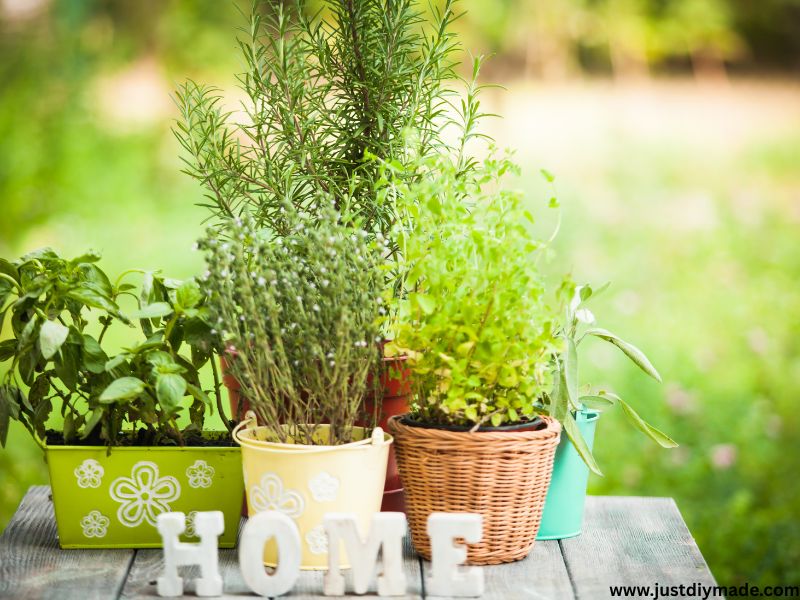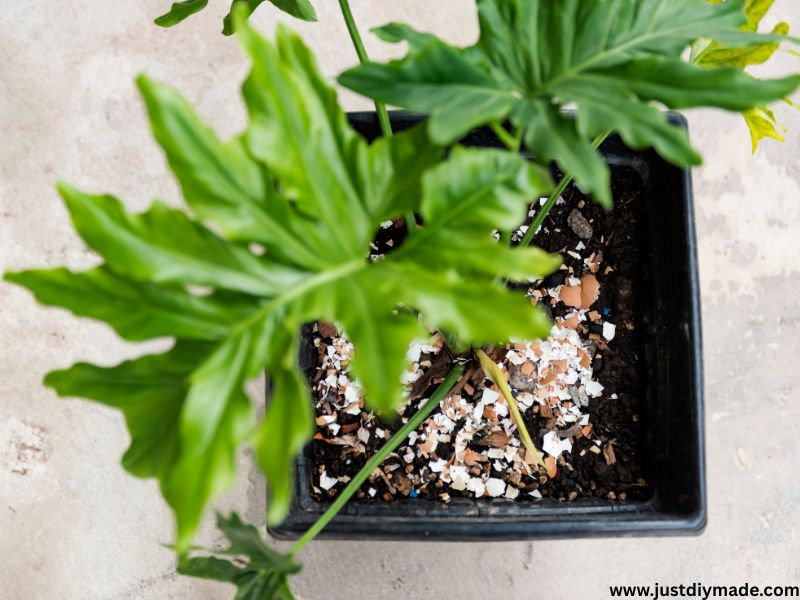Ths post talks about Herb Garden Ideas.
If you’ve ever dreamed of growing fresh herbs at home but thought you didn’t have the space, this guide is for you.
Even if you’re living in a small apartment, a tiny house, or a rental with little outdoor access, you can still enjoy the flavor and beauty of a thriving herb garden. Growing herbs in tight spaces is not only possible—it’s easier than you might think, and incredibly rewarding.
Fresh herbs make a huge difference in meals, and having them within arm’s reach saves money and trips to the store.
Plus, caring for plants—even a few small ones—can reduce stress and brighten your space. So let’s dig into five smart, space-saving herb garden ideas you can start today, no backyard required.
Beginner-Friendly Herb Choices
If you’re just getting started, it’s best to begin with herbs that are easy to grow and forgiving. Here are some top picks for beginners:
- Basil: Thrives in sunny spots and adds great flavor to pasta and pizza.
- Mint: Grows quickly and smells amazing—just keep it in its own pot as it can spread fast.
- Parsley: Hardy and easy to grow indoors or out.
- Chives: Low-maintenance and perfect for garnishes and flavoring.
- Thyme: Drought-tolerant and versatile for cooking.
- Oregano: Loves the sun and brings bold flavor to Italian dishes.
These herbs don’t require a green thumb and can give you the confidence to grow more later. They’re also readily available at local garden centers, easy to propagate, and forgiving if you occasionally forget to water.
For absolute beginners, starting with just two or three varieties and gradually expanding as your confidence grows can make the process more enjoyable.
1. Hanging Herb Garden
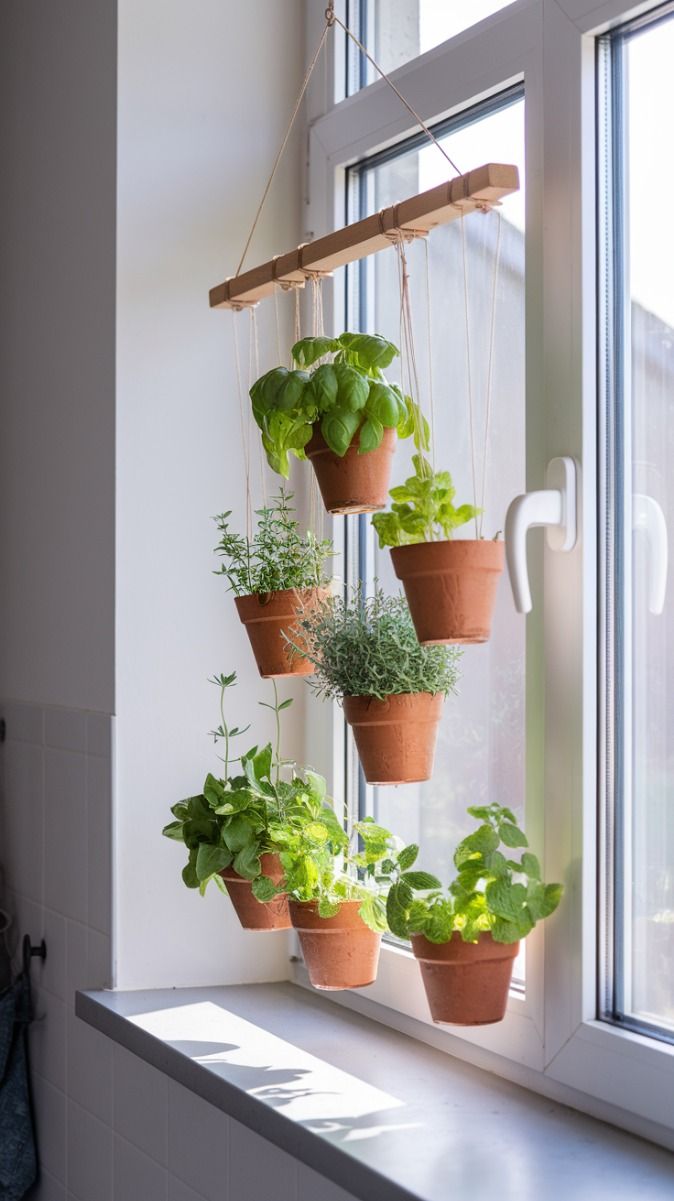
If floor or counter space is limited, go vertical. Hanging herb gardens are perfect for balconies, kitchen windows, or any sunny spot.
You can use hanging planters, recycled tin cans with hooks, or even a tiered hanging basket to create a mini herb wall.
This is one aesthetically pleasing Herb Garden Ideas.
Great for: Basil, thyme, oregano, parsley
Tip: Be sure your planters have drainage holes, and place a saucer underneath if indoors to catch excess water.
Extra Idea: Use macramé plant hangers or repurpose hanging shoe organizers for a boho or rustic look. Each pocket becomes a mini planter!
Bonus Tip: Try rotating your hanging herbs every few weeks so each one gets equal sunlight exposure. This helps ensure they grow evenly and stay lush.
2. Windowsill Herb Garden
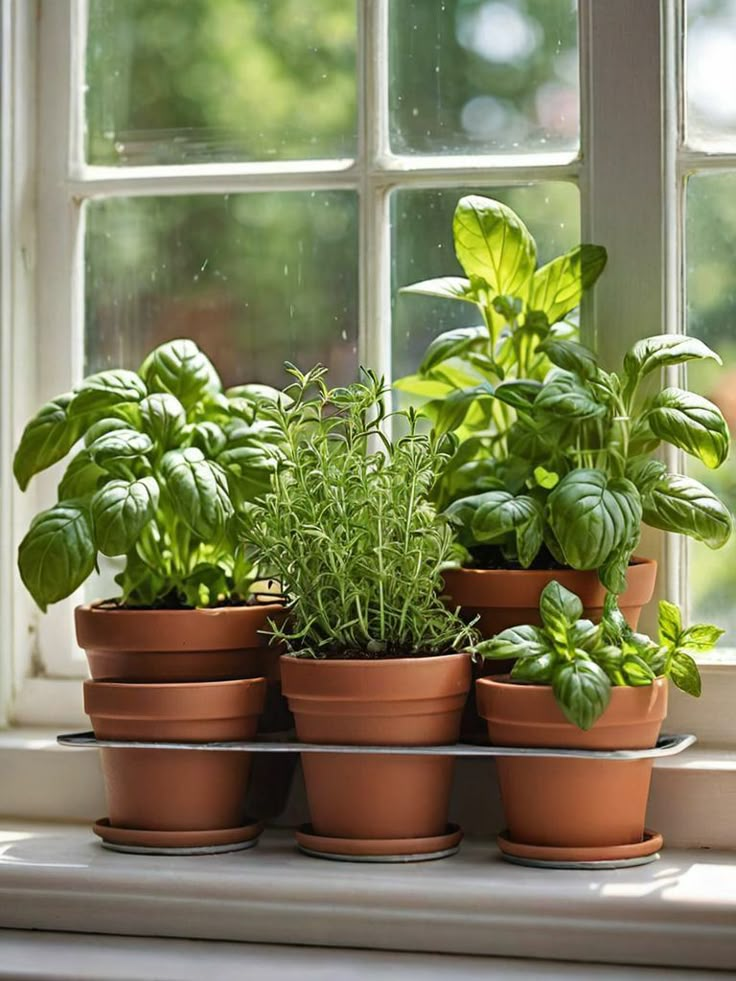
Your windowsill can be prime real estate for a simple indoor herb garden Herb Garden Ideas . All you need are a few small pots, decent sunlight, and the right herbs.
Great for: Chives, mint, dill, basil
Tip: South-facing windows work best, but if yours don’t get much light, consider adding a small grow light to keep your herbs happy.
Extra Idea: Use matching ceramic or terracotta pots to give your setup a polished look. Label each pot with wooden markers or chalkboard tags for easy identification.
Bonus Tip: Keep a small spray bottle nearby for misting herbs that prefer a bit more humidity, like basil or mint. It’s a simple habit that helps them thrive indoors.
3. Vertical Pallet Garden
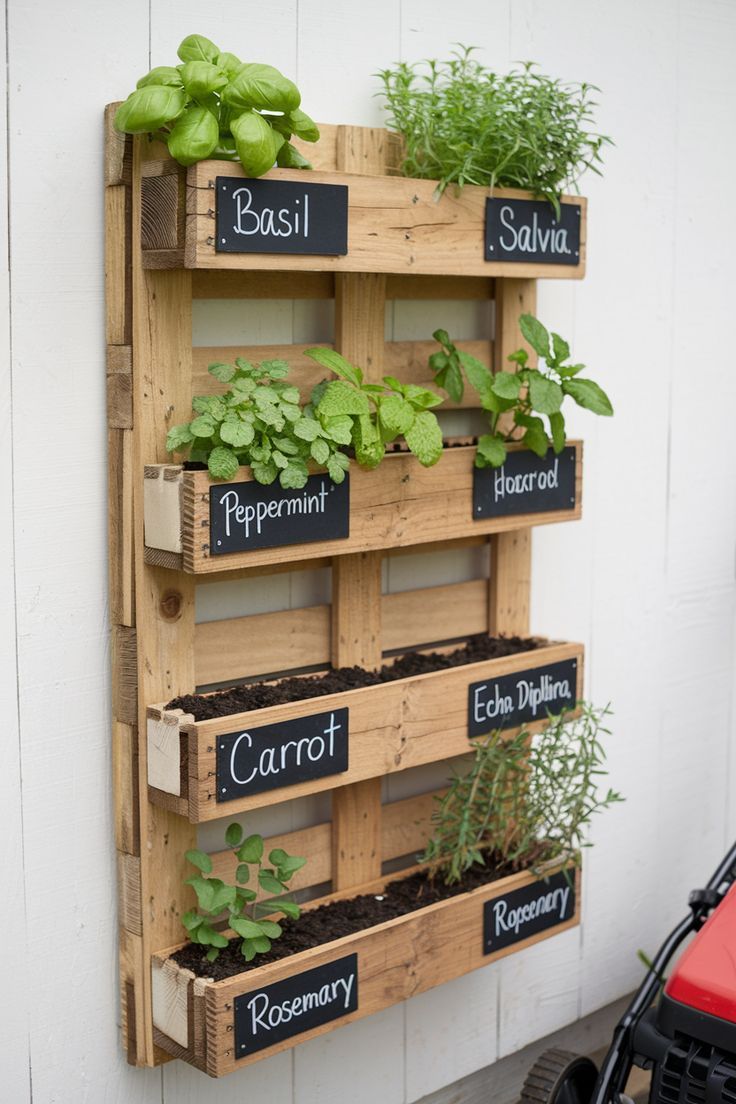
Wooden pallets are a popular DIY material, and with good reason—they’re sturdy, free or cheap, and make fantastic vertical gardens. Stand a pallet upright, add landscape fabric and staple it to the back and bottom of each slat to create planting pockets.
Great for: Rosemary, sage, thyme, cilantro
Tip: Make sure to secure the pallet to a wall or railing so it won’t tip over. Use high-quality potting soil and water from the top to allow gravity to distribute moisture downward.
Extra Idea: Paint or stain the pallet to match your outdoor decor. You can even stencil herb names on each slat for a farmhouse-chic finish.
Bonus Tip: Add small wheels to the bottom of your pallet for mobility. You can roll it to a sunnier spot or move it inside during bad weather.
4. Tiered Planter Stand
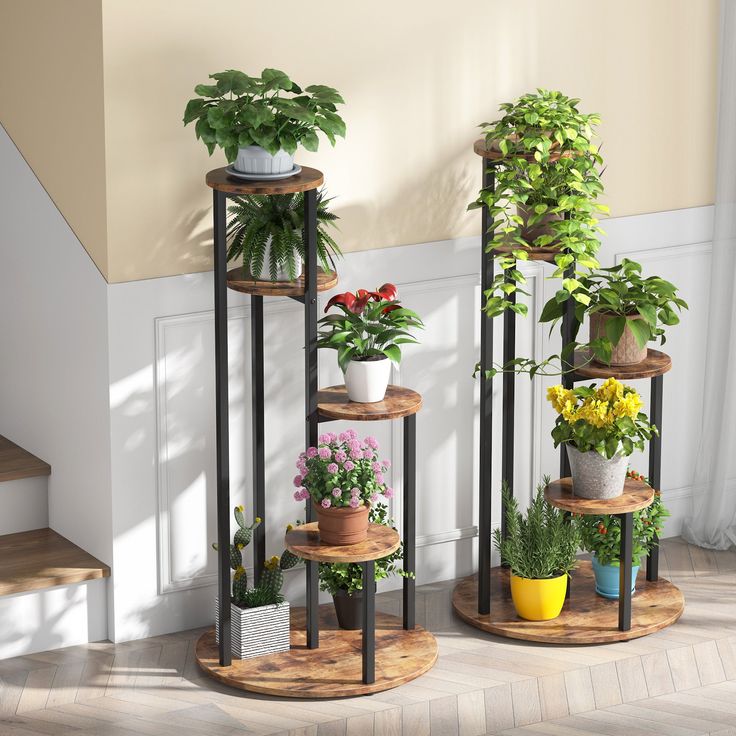
Think of this like stairs for your plants. A tiered stand allows you to grow several different herbs in one compact footprint, making it ideal for patios, balconies, or small porches. This is one lovely Herb Garden Ideas.
Great for: Basil, parsley, dill, chives, mint
Tip: Place taller herbs at the top and trailing or shorter ones lower down so they all get equal sunlight.
Extra Idea: Build your own stand with inexpensive lumber or repurpose an old shelf. Add wheels to the bottom for easy mobility if you need to chase the sun throughout the day.
Bonus Tip: Plant companion herbs that thrive together—like basil and parsley or thyme and oregano—to maximize space and make caring for them easier.
5. Container Herb Garden with Recycled Items
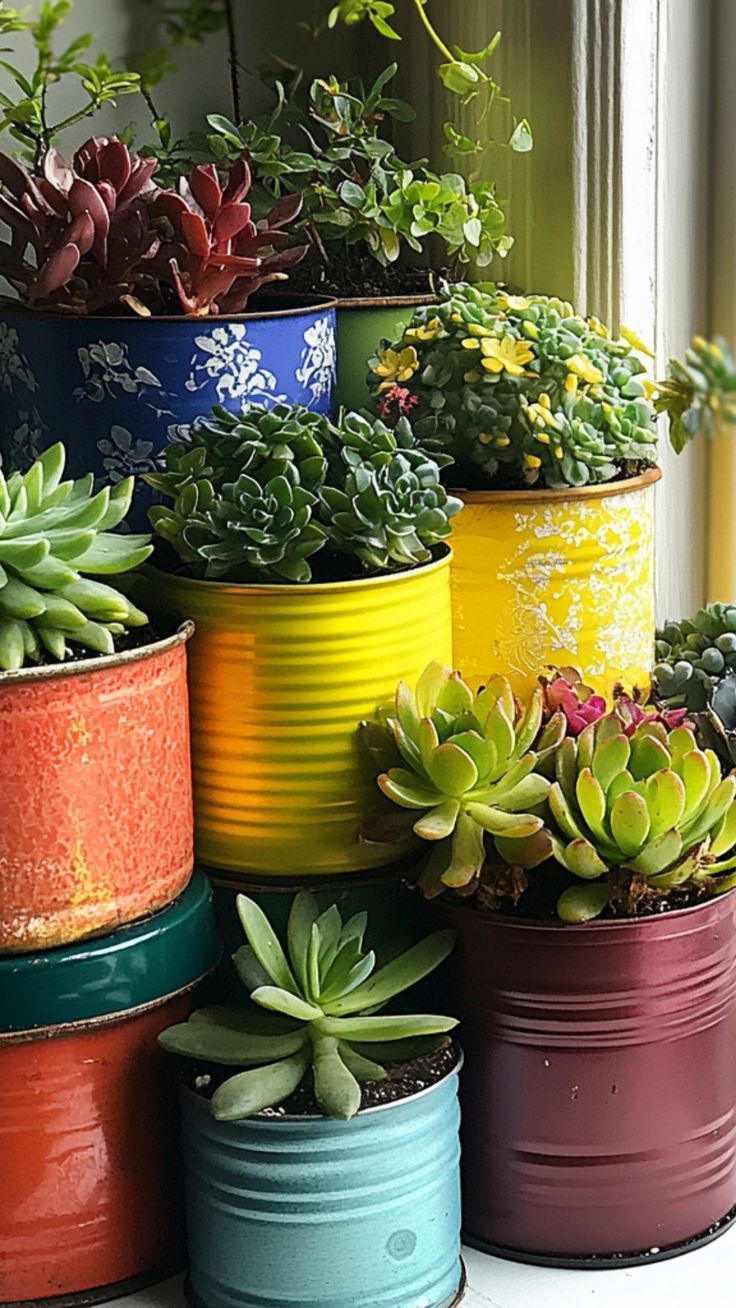
You don’t need fancy planters to grow herbs. Recycled containers like tin cans, tea tins, mason jars, or even old mugs can make charming and functional herb pots.
Great for: Mint, oregano, cilantro, chives
Tip: Drill holes in the bottom for drainage, or place small rocks at the bottom of containers without holes to prevent soggy roots.
Extra Idea: Paint the containers to add color and personality, or wrap them in burlap and tie with twine for a rustic look. Group them on a tray or tiered dessert stand to save space and create a portable herb garden.
Bonus Tip: Line the inside of non-porous containers like tins or mugs with coffee filters to allow water to drain without losing soil.
General Tips for Growing Herbs in Small Spaces
- Choose the right herbs: Some herbs grow better indoors or in containers. Start with easy ones like basil, mint, chives, and parsley.
- Mind your sunlight: Most herbs need 4-6 hours of sun per day. Use a grow light if your space doesn’t get enough natural light.
- Don’t overwater: Herbs like well-drained soil. Let the top inch of soil dry before watering.
- Harvest often: Regular trimming encourages new growth and keeps your herb garden lush and healthy.
- Use quality soil: Go with a light potting mix meant for indoor plants or herbs—garden soil is too dense.
- Fertilize sparingly: Herbs don’t need a lot of fertilizer. A diluted organic feed every few weeks will keep them growing strong.
Why Herb Gardens Are Perfect for Tiny Spaces
Herbs don’t need deep roots or huge containers, so they’re ideal for small-space living. They grow fast, they’re useful every day, and they make your home smell amazing. Plus, they’re a great introduction to gardening if you’re new to it.
And because herbs are relatively low-maintenance, they work great for busy schedules or forgetful plant owners. You can water them a few times a week, harvest often, and still enjoy a productive garden.
Extra Benefits of Growing Herbs at Home
- They’re cost-effective: A single bunch of herbs from the grocery store can cost a few dollars and only last a week. Growing your own means you always have fresh herbs ready.
- They reduce waste: No more half-used wilted herbs thrown away. Just snip what you need.
- They purify the air: Many herbs act as natural air purifiers, making your home healthier.
- They attract pollinators: If you place them outdoors, flowering herbs like basil and thyme bring bees and butterflies.
- They’re fun to share: Got a friend or neighbor who loves to cook? Clip a small bunch and wrap it in twine as a simple, thoughtful gift.
- They’re educational: Growing herbs is a hands-on way to learn about plants, sustainability, and the food cycle—great for kids or curious adults.
Final Thoughts: A Little Garden Goes a Long Way
You don’t need a huge yard to enjoy gardening. With a few creative containers and the right herbs, even the tiniest apartment or condo can become a thriving green space.
Growing herbs in tight quarters not only helps you eat healthier and save money, but it also brings a little peace and joy into your everyday routine.
So the next time you crave fresh basil for your pasta or a sprig of mint for your tea, look no further than your windowsill or wall planter. Your tiny space can produce big flavor—and maybe even spark a lifelong love for growing your own food.
Get started today with what you have on hand, and let your herb garden grow—one leaf at a time.
And remember, your herb garden doesn’t have to be perfect to be productive. Start with a few containers, learn as you go, and enjoy the satisfaction that comes from growing your own fresh herbs, no matter how little space you have.
No matter how compact your living space may be, there’s always room to cultivate something green.
Even if it’s just a couple of repurposed mugs on a windowsill or a single hanging planter on your balcony, the presence of herbs adds life and vibrancy to your daily surroundings.
You’ll find yourself using them in recipes more often, appreciating their scents, and maybe even expanding to more edible plants over time.
With a little effort and creativity, your mini herb garden can thrive and inspire more gardening adventures in the future.
Above all, don’t be afraid to experiment. Gardening is a journey, not a race. Every sprout, every harvest, and even every failed attempt teaches you something new. Let your tiny herb garden be a source of daily joy and discovery.
You May Also Like
